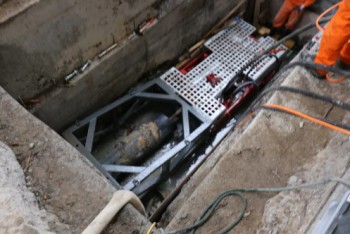1.Description
Pipe bursting is a trenchless method of replacing buried pipelines (such as sewer, water, or natural gas pipes) without the need for a traditional construction trench. "Launching and receiving pits" replace the trench needed by conventional pipe-laying.
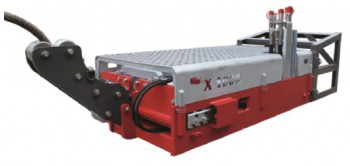
2.Advantage
No trenching involved means minimal disruption of existing infrastructure.
Pipe size can be increased along the same route.
Can be more cost effective given project conditions.
Faster installation than open cut, especially for deep pipe.
Minimal dewatering necessary in wet conditions.
Minimizes social costs such as traffic diversions, etc.
3.Filed of application
Pipe bursting may also be used to expand pipeline carrying capacity by replacing smaller pipes with larger ones, or "upsizing." Extensive proving work by the gas and water industries has demonstrated the feasibility of upsizing gas mains, water mains and sewers. Upsizing from 100mm to 225mm diameter is now well established, and pipes of up to 36 inch[1] diameter and greater have been replaced.
4.Process introduction
Excavate and expose existing lateral pipes that connect individual properties to the main sewer line in the street
Connect laterals to the main sewer with a temporary pipe
Shore the excavation and cover it with a steel plate to allow traffic to use the street (this step takes a week or more per block)
Dig an insertion shaft about 20 feet long and four to six feet wide
Weld sections of black plastic pipe the day before pipe-bursting to make a single, block-long pipe. Workers leave this long pipe section at the curb overnight, and it can block driveways.
Insert a conical bursting head into the existing pipe and lay new pipe behind the bursting equipment for insertion. This can block one or more intersections and driveways for up to several hours.
The bursting head moves forward, shatters existing pipe and forces pipe fragments into the surrounding soil.
Pull or push new pipe into place behind the bursting head. This usually takes a few hours per block.
When the new main sewer is in place, crews make temporary lateral connections to the new pipe, making the sewer fully operational.
Over the next few days, crews make permanent lateral connections, backfill the lateral trenches, and do temporary paving.
1.Prepare equipment and build work
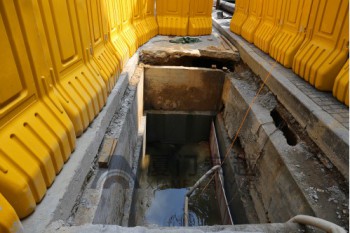
2.Installation of pipe splitter
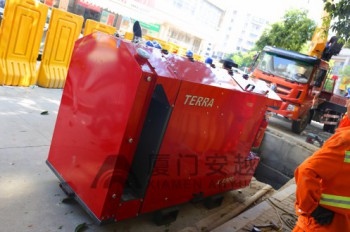
3.Connect the hydraulic power unit to the split pipe equipment
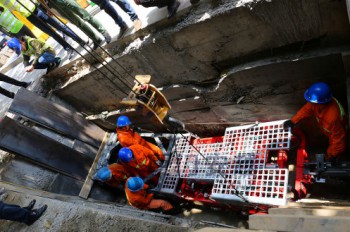
4.Connect the hydraulic power unit to the split pipe equipment
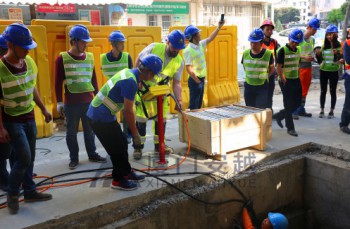
5.Install the drill pipe and push up to the return pit

6.Connect the new pipe to the expansion head
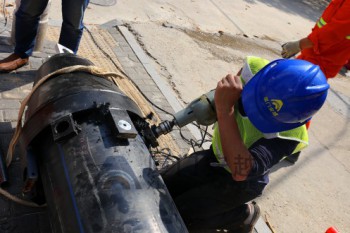
7.Set the pipe
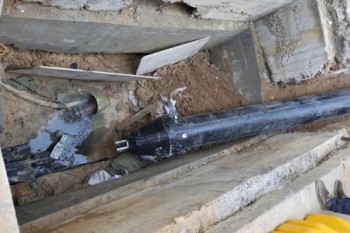
8.Connect the split head and expansion head
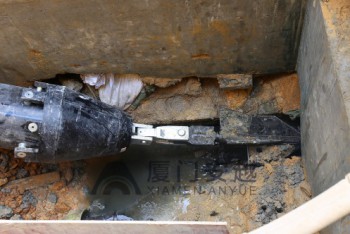
9.Pull back the split pipe and remove the drill pipe section by section
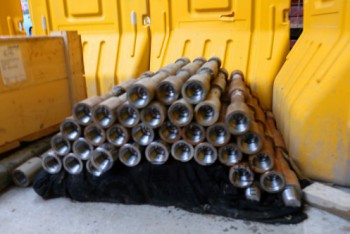
10. Complete the pulling back work
